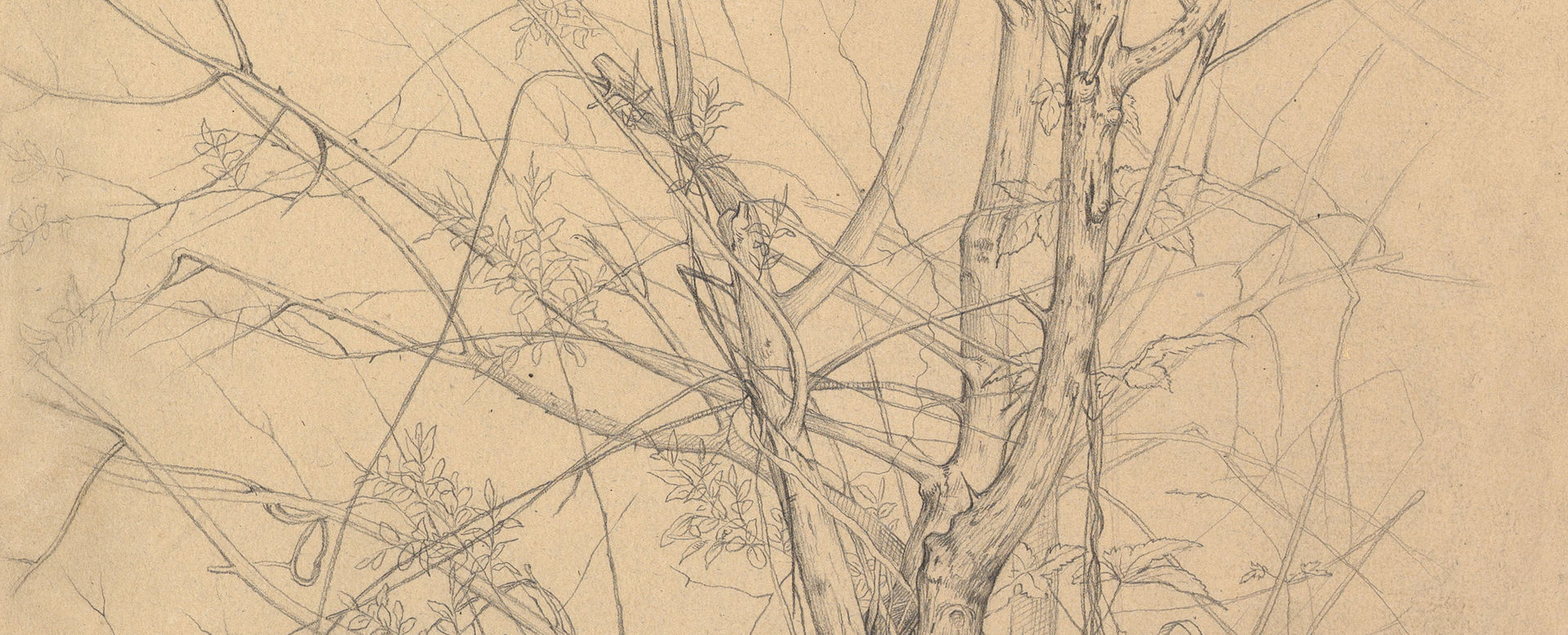An Indian Yogi Tied to a Palm Tree
Willem Schellinks Dutch
Former Attribution Anonymous, Dutch, 17th century Dutch
Not on view
As described in the extensive inscription in Schellinks’s hand, this drawing shows an Indian yogi chained to a tree; another figure bows before him, having brought him offerings of food. In the middle distance, another figure rides an elephant.
Schellinks is not known to have traveled to India, but his brother Laurens, a surgeon employed by the Dutch East India Company (VOC), seems to have done so.[1] This drawing could be Willem’s reconstruction, or re-imagination, of a sight described to him. It is equally possible, however, that he adapted the image from a Mughal painting, several examples of which are known to have been in the Dutch Republic in the mid-seventeenth century and to have inspired Schellinks to paint images incorporating Mughal motifs (and to write a poem about Indian art). It is plausible that he saw an image similar to the depiction of the emperor Babur visiting the ascetics of Gorkhatri (from the Baburnama manuscript in the British Library), which features members of the Nāth order not chained to but seated under trees with their legs bound in yogic poses with straps. Yogic practices were of great fascination to the Mughal emperors, particularly Akbar (1542-1605), for whom the depiction of his grandfather at Gorghatri and various others highly detailed images of yogis were painted.[2]
Unlike Schellinks’s paintings of recontextualized Mughal motifs and figures, the present drawing shows an interest in ethnographic authenticity. Touches of red chalk indicate the color of the loincloth and flag. Graphite is employed to clarify details, particularly the iron chain. The image could have been intended as part of a larger project and/or for a patron with a particular interest in global cultures, someone like Laurens van der Hem, for whom Schellinks produced landscape drawings of other foreign locales.
(JSS, 8/23/2018)
[1] Laurens Schellinks’s will refers to an (untraced) account of such a trip, as well as to a group of “East Indies” drawings. Stijn Alsteens and Hans Buijs, Paysages de France : dessinés par Lambert Doomer et les artistes hollandais et flamands des XVIe et XVIIe siècles (Paris: Fondation Custodia, 2008), p. 52, n. 15; Jan de Hond in Asia in Amsterdam: The Culture of Luxury in the Golden Age (Salem and Amsterdam, 2015), p. 293. See also Sanjay Subrahmanyam, “A Roomful of Mirrors: The Artful Embrace of Mughals and Franks, 1550-1700,” Ars Orientalis 39 (2010): pp. 39-83; Corinna Forberg, Die Rezeption indischer Miniaturen in der europäischen Kunst des 17. und 18. Jahrhunderts (Petersberg: Michael Imhof Verlag, 2015) and Stephanie Schrader, ed. Rembrandt and the Inspiration of India (Los Angeles: J. Paul Getty Museum, 2018).
[2] See Rachel Parikh, “Yoga under the Mughals: From Practice to Paintings,” South Asian Studies, 31, no. 2, pp. 215-36, DOI: 10.1080/02666030.2015.1094207
Due to rights restrictions, this image cannot be enlarged, viewed at full screen, or downloaded.
This artwork is meant to be viewed from right to left. Scroll left to view more.





